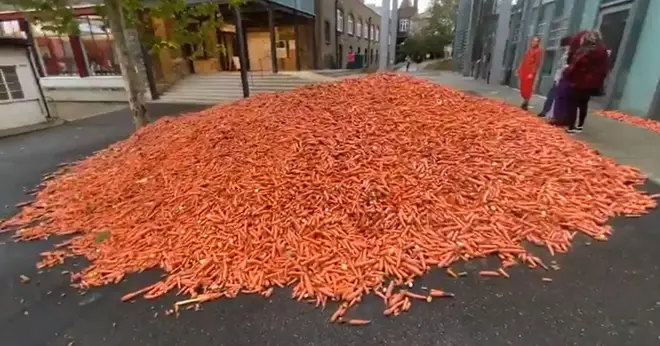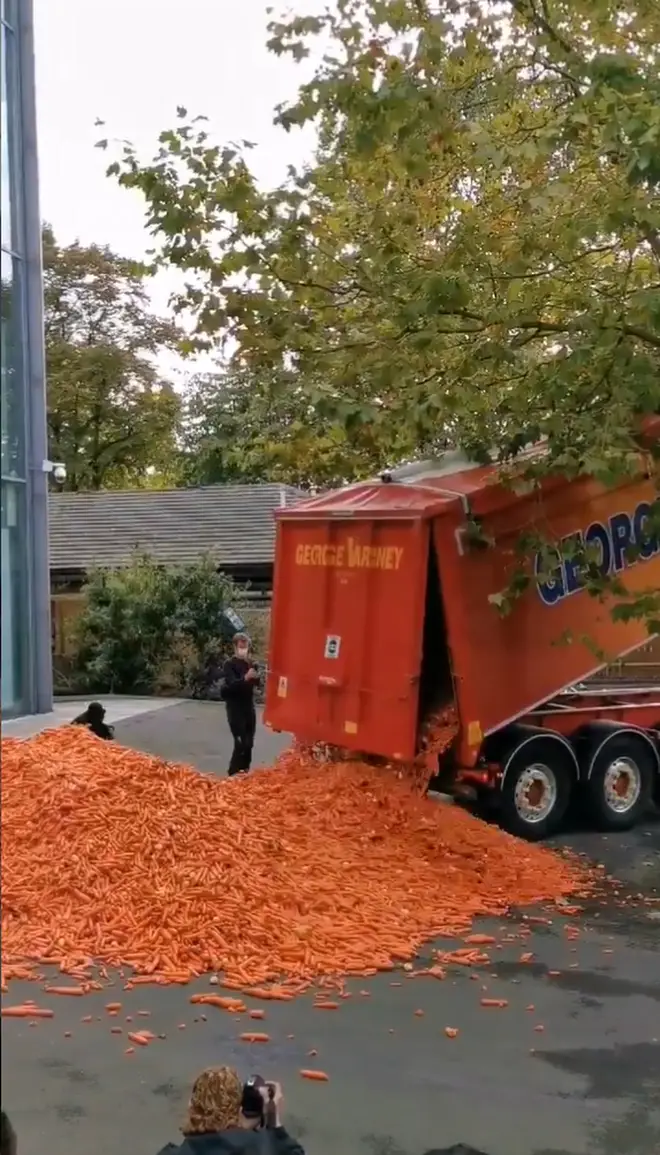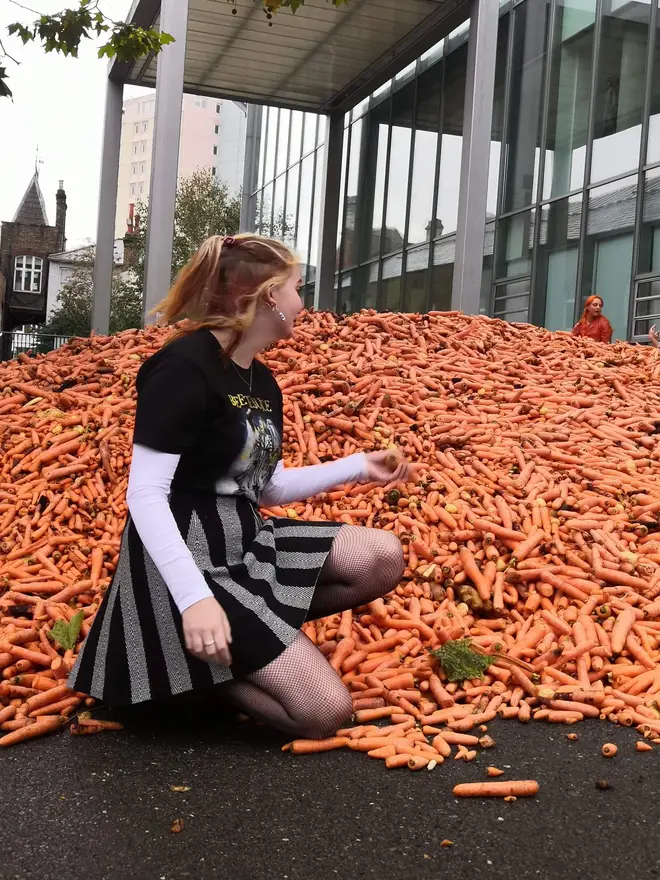
James O'Brien 10am - 1pm
30 September 2020, 21:58 | Updated: 30 September 2020, 22:24

29 tonnes of carrots dumped outside university for art installation
Nearly 30 tonnes of carrots have been dumped outside Goldsmiths College in London as part of an art installation.
The unusual piece, named Grounding, was thought up by Spanish-Welsh artist Rafael Perez Evans and was installed when a large, orange lorry dumped the vegetables outside Goldsmiths College's Ben Pimlott building in New Cross, which is part of the University of London.
Mr Perez Evans said the carrots were unwanted and were not deemed good enough for supermarket shelves and will go on to be used to feed animals.
Many students and passers-by have climbed up the pile of carrots to take photos since the piece was installed on Tuesday, with some even pocketing a few to take home to eat.

One 20-year-old musical theatre student, Eden Groualle, told the PA news agency after seeing the work: "I thought it was very bizarre but knew this is very Goldsmiths, and all that was left was to understand what it meant."
According to Mr Perez Evans' website, the artwork explores "the tensions in visibility between the rural and the city", and was inspired by European farmers dumping produce as a form of protest.
"The therapeutic technique of grounding involves doing activities that 'ground' or electrically reconnect you to the earth," he added.
His unconventional installation is part of Goldsmiths' MFA degree show.

However, many students said they felt uncomfortable that so much edible food was being dumped on the floor for the sake of art, despite them being rejected by supermarkets.
"Even though the carrots are being donated to farm animals at the end of the piece, it's still slightly problematic given the poverty, food shortages and homelessness in Lewisham," said Lester Langford, 20, who is from Warwickshire and studies history.
Josie Power, originally from Norwich, studies performance, politics and society and said she felt conflicted by the "surreal" artwork.

"It was something so fun and bizarre to go and see... but also it's hard not to acknowledge the glaring problems with food wastage," the 20-year-old said.
"However, this food was likely to be wasted anyway... so by using them for this project people are suddenly thinking about food wastage and the amount that doesn't make it to supermarkets to be sold.
"It's certainly an interesting way to gain attention for a social cause."